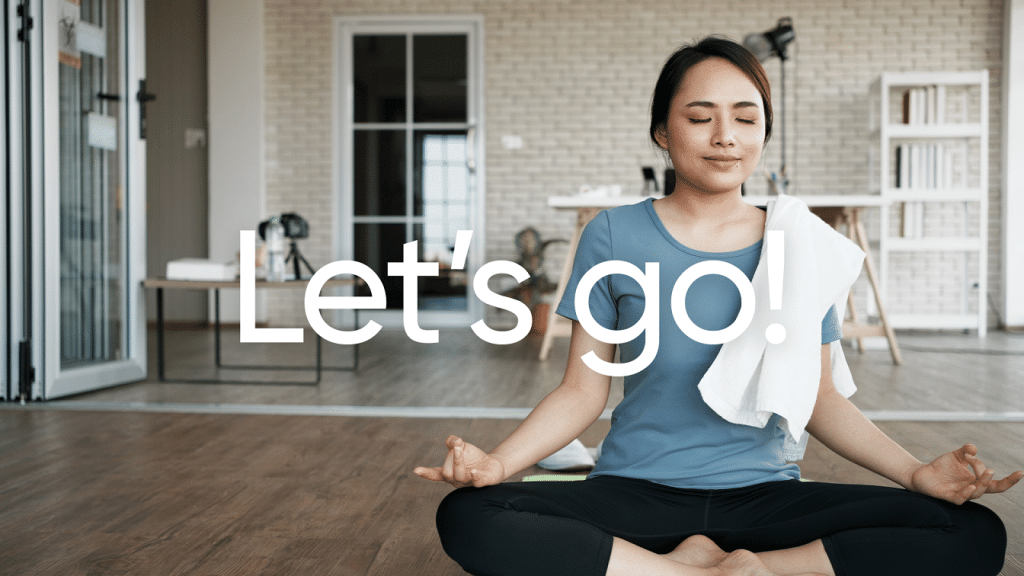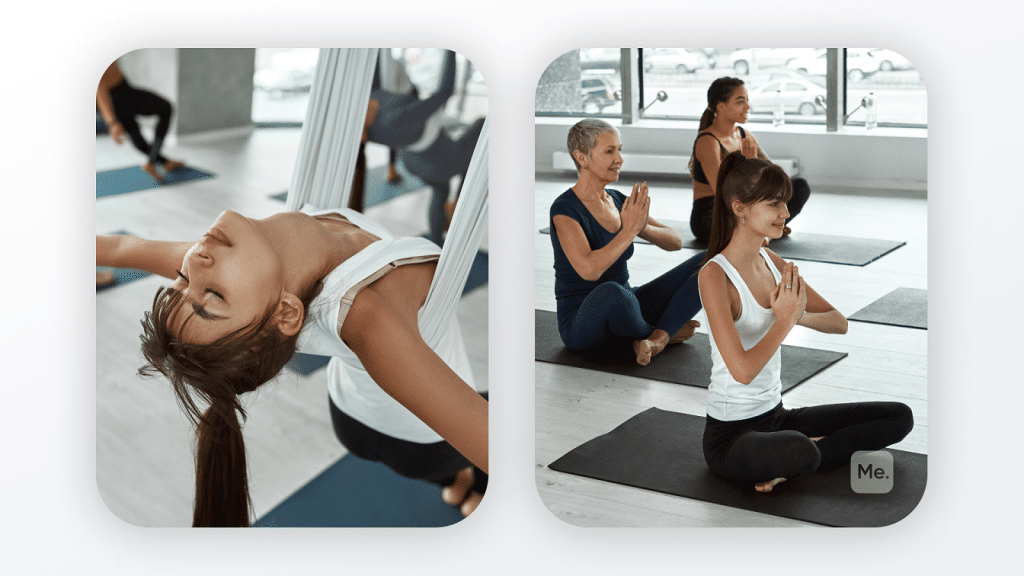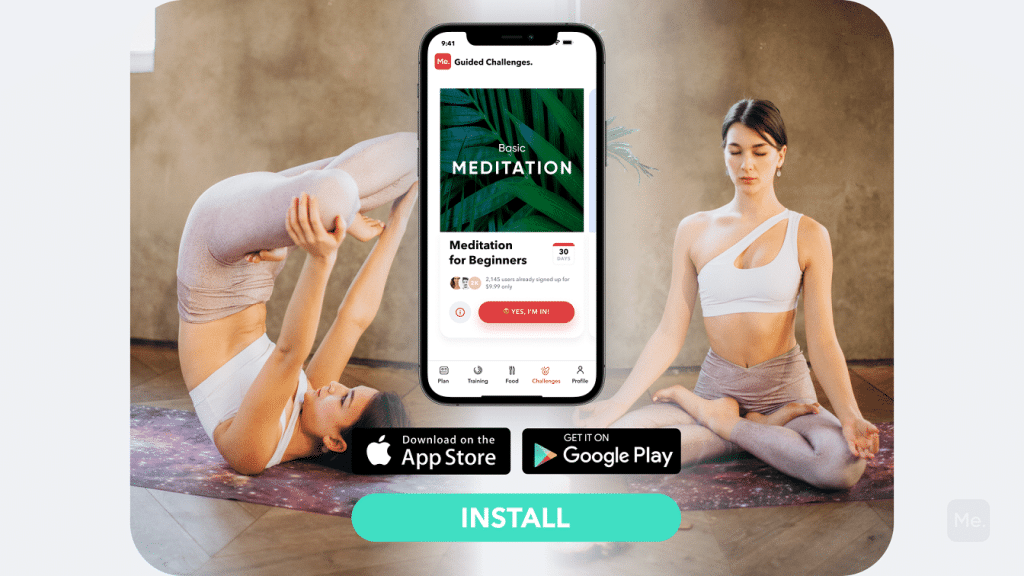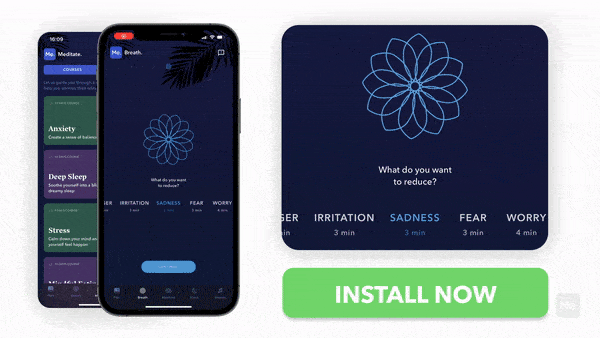Choosing to meditate for peace is a practice that could help you achieve a feeling of calm and peacefulness whenever you are going through a stressful situation. This exercise is an essential one to learn, especially during these trying times. In this article, we are going to expound on the benefits of this practice, why inner peace is important, how to meditate for world peace as well as meditation techniques and many more.
What Is Inner Peace?
To most people peace refers to the absence of violence. However, inner peace is a state of being mentally and spiritually serene, tranquil or calm. It means that you have enough knowledge and understanding to keep yourself strong in the face of discord or stress. No matter what happens or what goes wrong, you will not be an anxious mess about it.
Inner peace is great for your mental health as well as your general well-being but, unfortunately, it does not always come to us when we need it. Inner peace must be cultivated from within us and it is best done through a meditative mind. Studies have shown that this practice has the following emotional/mental benefits:
- Reducing and helping to manage depression;
- Helping reduce and manage stress and stressful situations;
- Helping women and new moms overcome postpartum blues;
- It can help regulate emotional ups and down caused by phobia, panic disorders, obsession, and bipolar mood swings, etc.;
- Improves concentration and mental clarity – A study published in 2013 showed that meditation can reduce hyperactivity and improve impulse control in ADHD patients (1);
- Reducing negative emotions.
Running a never-ending rat race, shoving trauma further and further away, falling into self-harming thought patterns, living life that’s eclipsed by constant anxiety and fear – this is what an average person goes through every day. Not addressing it will only pull you deeper into a downward spiral. BetterMe: Meditation & Sleep app will help you gain a new perspective on life and help you regain that long-lost internal balance!
How To Start Meditating For Beginners?
Meditating as a beginner can be daunting. However, with a few guiding pointers you will be able to do it in no time. Here is how to start meditating:
1. Pick A Quiet, Peaceful Location
This helps you concentrate better than if you chose to do this practice in a loud area.
2. Choose The Right Clothes
You can meditate in any piece of clothing you desire, however, it is better to choose loose clothing that does not cut into you and that allows you to breathe well.
3. Pick A Time
Since it requires concentration, it is best to do this exercise at a quiet time of the day. This could be done early in the morning or late at night before bed.
4. Find A Comfortable Position
You could either sit on the ground or choose to sit on a chair with your feet on the floor. Whichever position you choose, make sure you are as comfortable as can be to avoid fidgeting.
5. Choose A Time Limit
While it might be tempting to dive in and try meditating for 30 minutes, slow down and start small. At first try meditating for just a minute or two a day, Once you have mastered it, move on to five minutes, then 10, 30 and eventually you could be meditating for an hour each day.
6. Set Clear Intentions/Motivations
Whether you are choosing to meditate for peace, happiness, focus, stress or anxiety, being clear about your motivation will help you sink into your meditation mood better. It creates the right attitude for your goals and keeps you committed to it throughout the session.
7. Close Your Eyes
This will help with concentration as you are not distracted by the things your eyes land on.
8. Focus On Your Breathing
Do not try to control your breathing. Breath as you normally would and notice how your body expands and contracts with each inhale and exhale, respectively.
9. Let Your Mind Be
When starting to meditate for peace (or for any other reason), the mind tends to wander. If this happens, bring your thoughts back to your breath and focus on it. If random thoughts try to take root in your mind, do not focus on them. Let them filter in and out without holding on to any specific one.
Meditation Techniques To Incorporate In Your Life
Please note that there is no one specific or right way to meditate. Because of this, it is advisable to try all meditation techniques for you to find the best one that works for you. Here are some that you can try:
-
Loving-Kindness Meditation
Also known as Metta meditation, its goal is to help the practitioner cultivate an attitude of love and kindness towards themselves as well as people and things around them. It encourages them to show love and compassion not just to the positive but also to the negative people or situations that cause them mental stress, anger, frustration, and conflict.
-
Body Scanning
Also known as progressive meditation it involves paying attention to one specific body part at a time and slowly tightening and relaxing it, or visualizing a wave drifting over this part and taking the tension away. The main aim of this technique is to notice any tension in the body and release it, thus promoting relaxation.
-
Mindfulness Meditation
This technique is often used in Buddhist teachings and it encourages practitioners to remain aware and present. Instead of dwelling on the past or dreading the future, it encourages you to remain in the now. While taking part in this, you are required to, without judgment, pay attention to your thoughts as they pass through your mind.
This practice can improve your memory and focus, lessen impulsive, emotional reactions, and reduce the fixation on negative emotions (3).
-
Visualization Meditation
This is an exercise that combines both meditation and visualization that is based on the calm reflection of life. This practice enhances feelings of relaxation, peace, and calmness by visualizing positive scenes or images.
Read More: Visualization Meditation: Benefits And Techniques To Help You Unlock The Life Of Your Dreams
-
Kundalini Yoga Meditation
It is a combination of breath, movement, and sound that intertwines the practice of kundalini yoga and kundalini meditation. The benefits of this include mental clarity, sharper intuition, increased mindfulness and compassion, better sleep and improved mood (2).
-
Transcendental Meditation
This technique is used by practitioners to help them transcend or rise above their current state of being. It promotes a state of relaxed awareness and uses mantras to help people concentrate and achieve this state.
-
Focused Meditation
This technique requires the practitioner to concentrate using any of the five senses. It could be done through the counting of yoga beads, listening to some meditation music, etc.
How To Meditate For Peace Of Mind
- Find a private space where you can freely meditate without being distracted. If at home, this can be in your bedroom, the balcony, or at a quiet spot in the park if you prefer to meditate outside. Be sure to turn your phone off or put it on airplane mode.
- Choose a specific time of day. This helps make it a routine for you. The more you meditate, the better you become at it. Some people choose to meditate early morning for peace, because this time the world is quiet and has very few distractions – if at all. For those who can, timing the end of your meditation to be just as the sun is rising and sitting to watch it happen will give you an incredible start to your day.
- Create a peaceful, relaxing atmosphere before starting to meditate. You can do this by dimming the lights in your room, wearing free flowing clothes or robes, playing some soothing meditation music or using some essential oils in a diffuser. Candles also work great for aromatherapy.
- Find a good position. There is no one specific position to use to meditate for peace. You may choose to do it seated – either on a chair or on a cushion on the floor – or while lying down on a mat or on the bed.
- Once you are comfortable, close your eyes, take deep breaths and just relax. Clear your thoughts and let your attention be focused on your breaths.
- Do a body scan from your toes going to your head, taking note of any body part that has tension in it. Release any tension you find with each exhale. Scan your whole body and allow yourself to relax.
- Once you get to the top of your head, take a deep breath in, hold it for a second or two then breath out forcing any remaining tension with this exhale.
- With your next inhale, allow your body, heart and mind to be filled with warmth, peace, and calm. Feel yourself becoming centered, balancing, and becoming one with the universe. Hold on to this feeling and let it wash all over you.
- Once you feel calm and peaceful, slowly take a deep breath in, and slowly open your eyes as your exhale. Be sure to carry this feeling throughout the day and recall it whenever you feel stressed or anxious.
How To Find Inner Peace Without Meditation
If meditation is not for you, here are other ways on how to find inner peace:
- Take a walk. Being one with nature, without using your phone is a great way to find inner peace. You could also go camping or book a nature retreat for a couple of days.
- Focus on the things that you can control.
- Exercise. When you work out, the body releases endorphins, which not only reduce your perception of pain, but they also, trigger a positive feeling in the body, similar to that of morphine.
- Do a good deed. While you may not be feeling so great about yourself, doing a good deed for someone will lift your spirits and can help you find inner peace. Choose to volunteer at a soup kitchen, buy groceries for your elderly neighbour, watch your neighbours kids so they may rest a little, or cook a meal for a busy mum. The list is endless.
- Eat healthier foods and meals.
- Practice gratitude. Thinking about the things you are grateful for instead of those stressing you out is a fantastic way to meditate for peace.
- Have positive mantras. One example is Om Sarvesham Svastir Bhavatu which means May there be happiness in all, May there be peace in all, May there be completeness in all, May there be success in all.
- Forgive yourself and others. Holding on to hurt will only serve to make you feel bad thus eroding your inner peace.
- Stay away from criticism. Positive criticism is good for self-development. However, being overly critical of yourself and others is no good for deep inner peace. Learn how to accept others as they are, and how to cut out overly critical people from your life.
BetterMe: Meditation & Sleep app can help you transmute stress into serenity, pull you up from the doldrums, free your mind from the cares and worries of the world, quell racing thoughts and infuse you with tranquility! Start using it now and change your life!
What Does Meditation Do To Your Mind And Body?
Scientists, through the use of MRI scans have realized that meditation causes our brains to take a break from and stop processing information as actively as they normally would during other times. Here is exactly how this happens:
-
The Frontal Lobe
This part of the brain ‘goes offline’ or switches off during the period of meditation. The frontal lobe is important for voluntary movement, expressive language and for managing higher level executive functions. These executive functions include the capacity to plan, organize, initiate, and self-monitor.
-
The Parietal Lobe
When meditating this part slows down. This lobe is located at the upper back area in the skull and it processes sensory information mainly relating to touch, taste, and temperature.
-
The Thalamus
The function of his part is to relay motor and sensory signals to the cerebral cortex. As you meditate for peace, this practice will cause the flow of incoming information to slow down. The more vast you are at meditation the less information this part of the brain receives whenever you choose to meditate.
-
Reticular Formation
This part is best known for its role in promoting arousal and consciousness. As you meditate, this exercise puts your feelings of arousal on hold.
This practice also improves focus and concentration, increases self-awareness and self-esteem, lower levels of stress and anxiety, and helps us be kinder to ourselves and those around us.
What does meditating do to our bodies? This calming exercise helps decrease metabolism, eases chronic pain, lowers blood pressure, and improves heart health and heart rate (it reduces high blood pressure in the long term).
It also improves breathing, can boost your mood and improves your immunity. In relation to women’s health, this practice is said to help with PMS (premenstrual syndrome) – reduces hot flashes, breastfeeding in news mothers – boosts the production of milk -, as well as infertility problems in women trying to conceive.
Read More: Meditation Breathing Techniques: A Must-Do In Stress Management
How To Meditate For World Peace?
In 2011, Harvard University psychologist and famed intellect Steven Pinker, in his book The Better Angels of Our Nature: Why Violence Has Declined, claimed that human beings are now living in the most peaceful times in the history of our species. While we are not hearing about sieges, colonization, or occupations the world is not as peaceful as we would like to imagine.
At the tail end of 2019, the website ForeignPolicy.com made a top 10 conflict watch for 2020, a scary list that shows you how people, even children, are engaged in bloody wars all over the world. As of October this year (2020), according to world conflict tracking websites, nearly a quarter of the world is currently engaged in either skirmishes, minor conflicts, wars or major wars all which have claimed many human lives.
If this was not enough to worry about, others have even started tracking and mapping out areas where they believe that World War III could possibly start. Such news and statistics is quite unnerving and could lead to a lot of stress and anxiety. Choosing to meditate for world peace is one way to help get rid of these negative feelings and spread some love and light to the world.
Here Is How To Do It:
- Begin in a comfortable position. You could either be sitting down on a chair, on the floor on a meditation pillow, or lying down in bed or on a mat.
- Once you are settled, close your eyes, breath in deeply and exhale completely. Feel the cool air and it goes in through your nose and how your body expands. Breath out, noticing the warmth of your breath and how your body and muscles relax as you do this.
- Do this breathing exercise for about 15 seconds and then pause. Let your body relax and your thoughts filter in and out of your brain without you holding to any specific thought.
- Switch your attention to your heart and start filling it with warmth, love and light. Visualize a large glowing ball growing from the center of your heart, slowly filling with peace, love, empathy, compassion, and kindness.
- As this ball grows and becomes brighter, continue filling it with these feelings and charge it with a deep sense of healing.
- Once this ball is full and as bright as it could possibly get, take a deep breath in, getting your whole body and mind and spirit ready to release it.
- As you exhale, imagine this ball of light shining out onto the world around you. Let this light shine on your family, friends, neighbors, your country, and the world as a whole. More specifically, send this light to all the countries that are currently experiencing war, civil unrest, rebellion, protests, and all other negatively charged emotions and situations.
- Remember to breath and keep charging the ball and with every exhale, send out the light and all the positive emotions that it carries from the ball.
- As you do this, you could also repeat this mantra: May love heal our world. May we all choose understanding, kindness and compassion. May those who have darkness in their hearts find love and those who are anxious find inner peace. May the individual and collective hate and fear be washed away. May we all put down our weapons and embrace love. And may the light inside of me radiate out onto the world and every being who is a part of it.
- Visualize as one by one, in the hundreds, thousands, and millions, all the people are around you, receiving your light and embracing it. Visualize the light filling them as they too start to radiate with it, spreading more healing and love out onto the world.
- Once you are done, take a couple of deep inhales and exhales and then slowly open your eyes.
The Bottom Line
Choosing to meditate for peace is a practice that will pay off in your day to day life. Not only is the world currently going through a pandemic, but wars and social injustices seem to be dropping up everyday in different parts of the world.
If you are feeling overwhelmed, take a few minutes to meditate for world peace and meditate for peace within yourself, your family and your county. This will help combat anxiety and stress keeping you grounded in these any difficult times that may arise in the future.
DISCLAIMER:
This article is intended for general informational purposes only and does not address individual circumstances. It is not a substitute for professional advice or help and should not be relied on to make decisions of any kind. A licensed physician should be consulted for diagnosis and treatment of any medical conditions. Any action you take upon the information presented in this article is strictly at your own risk and responsibility!
SOURCES:
- Effects of mindfulness-based cognitive therapy on neurophysiological correlates of performance monitoring in adult attention-deficit/hyperactivity disorder (2013, pubmed.ncbi.nlm.nih.gov)
- Effects of Mindfulness on Psychological Health: A Review of Empirical Studies (2011, www.ncbi.nlm.nih.gov)
- The impact of mindfulness on the wellbeing and performance of educators: A systematic review of the empirical literature (2017, www.sciencedirect.com)

























